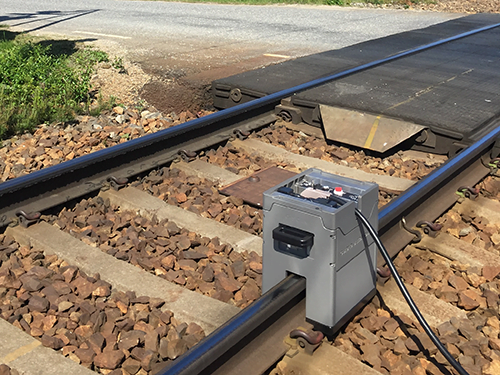Studios
-
Support
-
Contact us
-
Products
Studios
First developed in 2005 with the assistance of Network Rail, the G-Scan® rail instrument sends guided waves down the length of a rail to look for any areas of cross section change. The guided waves that are created in the rail are able to detect cracks and corrosion in any section of the rail, including the ‘foot’ and ‘toe’.
Because of this ability to detect corrosion areas that are normally hidden from higher frequency methods that access the rail from the head, the G-Scan® system is often used to inspect level crossings that are susceptible to foot corrosion, but are difficult to inspect without disrupting both rail and road traffic. Guided wave inspection performed from outside of the level crossing can inspect the section while the road is still fully operational; rail traffic is often not disturbed if the period between trains is long enough. The results allow you to rank the crossings, extending the mandatory lifting time for some crossings, prioritising replacement for others.

The current generation of the G-Scan® uses the Wavemaker® G4 electronics and the WavePro software to collect, analyse, and report the guided wave data.
Standard sizes for the G-Scan® unit are CEN50, CEN54, CEN56, and CEN60, although specials can be produced for a variety of rail sizes ranging from 36 kg/m to 61 kg/m.